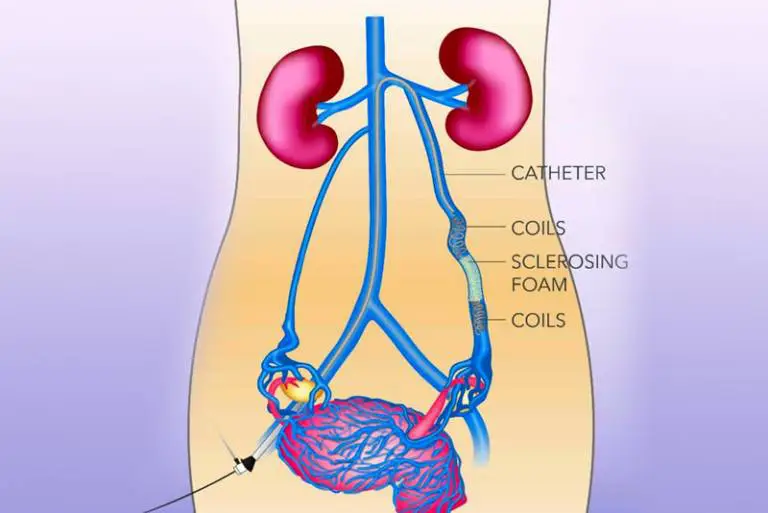
Pelvic Congestion Syndrome
Pelvic Congestion Syndrome
Millions of women experience chronic pelvic pain severe enough to interfere with their daily lives. For many of these women, the pain is caused by a damaged vein or veins in the pelvis, a condition called pelvic congestion syndrome (PCS).
Pelvic congestion syndrome typically occurs in women of childbearing age who have had multiple pregnancies. The combination of hormonal changes and increased blood volume during pregnancy can cause veins to stretch and become damaged. After childbirth, the vein does not return to normal, instead remaining thick, swollen, and unable to effectively return blood back to the heart. Common symptoms of pelvic congestion include:
- Dull ache or heaviness in the pelvis or lower back that worsens when standing or during menses
- Abdominal pain during or after sex
- Varicose veins on the genital area and/or thighs
- Urinary urgency, sometimes with incontinence
- Bowel issues (abdominal pain and alternating diarrhea and constipation)
Diagnosing pelvic congestion
Pelvic congestion syndrome can be easily confused with other conditions that cause pelvic pain. Because the problem veins are located deep in the pelvis, it takes special diagnostics to pinpoint them. CORA interventional radiologists are experts in using ultrasound and x-ray guided imaging to diagnose PCS.
Treatment for Pelvic Congestion Syndrome
A minimally invasive procedure called Pelvic Vein Embolization (PVE) or Ovarian Vein Embolization (OVE) can be performed to permanently close off the problem vein, relieving the symptoms of pelvic congestion syndrome.
A CORA interventional radiologist will insert a flexible tube through a tiny nick in your skin and guide the tip through your vascular system to the damaged vein. Either heat or a special chemical will be delivered directly into the vein, causing it to collapse and permanently close. Your body will now re-route blood to other, healthier veins, consequently relieving your symptoms. Most women experience relief within a few days after having the procedure and 85-95% of women report total relief or significant relief of their pain and symptoms.
Benefits of pelvic vein embolization
- PVE relieves pressure on pelvic veins, reducing or eliminating symptoms
- No need for general anesthesia
- Quick, in-office procedure that allows you to go home within a few hours
- Resume normal activities shortly after the procedure
- Symptom relief in as little as a few days


GARRETT SCHROEDER, MD
Vascular Interventional Specialists

BENJAMIN ENGLISH, MD
Vascular Interventional Specialists

CASEY CURRAN, MD
Vascular Interventional Specialists

DANA MANN, MD
Vascular Interventional Specialists

BRIAN EVANS, MD
Vascular Interventional Specialists

Ande DeMarco
PA-C Physician Assistant
